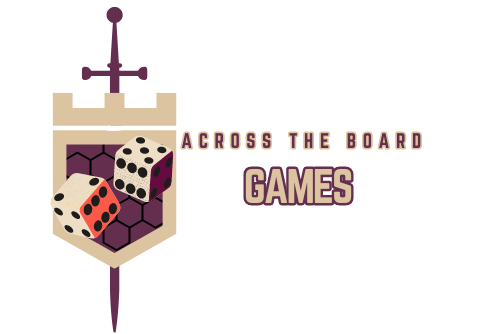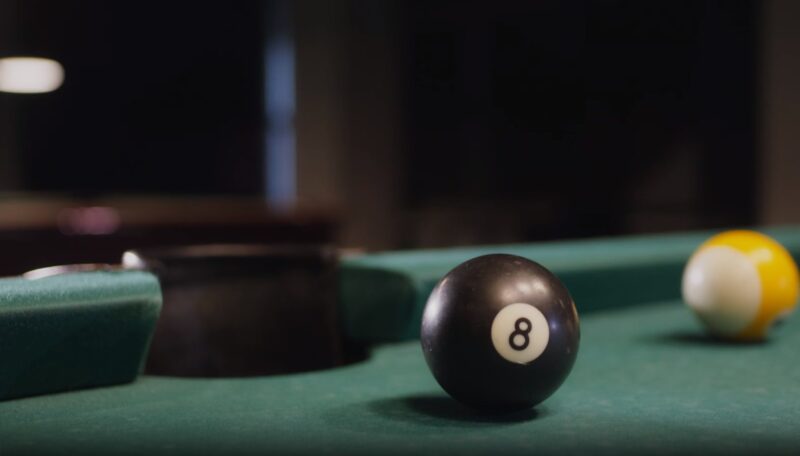8 Ball Pool is one of the most popular cue sports, played on a pool table with six pockets, cue sticks, and sixteen balls: a cue ball and fifteen object balls. This game is not just about sinking balls into pockets but also about strategy, skill, and understanding the rules.
Whether you are a beginner or an experienced player looking to refine your game, understanding the nuances of 8 Ball Pool can significantly enhance your gameplay and enjoyment.
Equipment Requirement
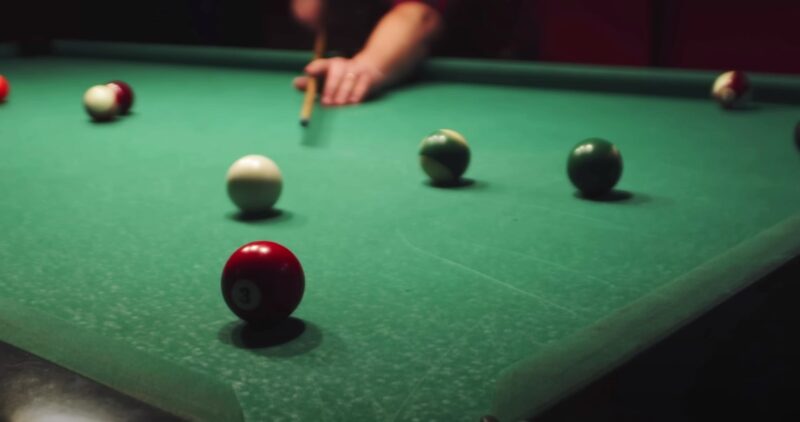
Before diving into the rules, it’s essential to familiarize yourself with the equipment used in 8 Ball Pool. The game is played on a rectangular pool table with pockets at each corner and in the middle of the long side.
The balls consist of one white cue ball and 15 object balls, including seven striped balls, seven solid-colored balls, and the black 8 ball. Each player uses a cue stick to strike the cue ball, aiming to pocket the object balls.
Setting Up the Game
The game begins with a break shot. The balls are racked at the lower end of the table in a triangle, with the apex ball placed on the foot spot. The 8 ball is positioned in the center of the rack, and the other balls are placed randomly, with the stripes and solids evenly distributed. One player is chosen to take the break shot and aims to scatter the object balls. The break is considered legal if at least four balls hit the cushions or any object ball is pocketed.
The Objective of the Game
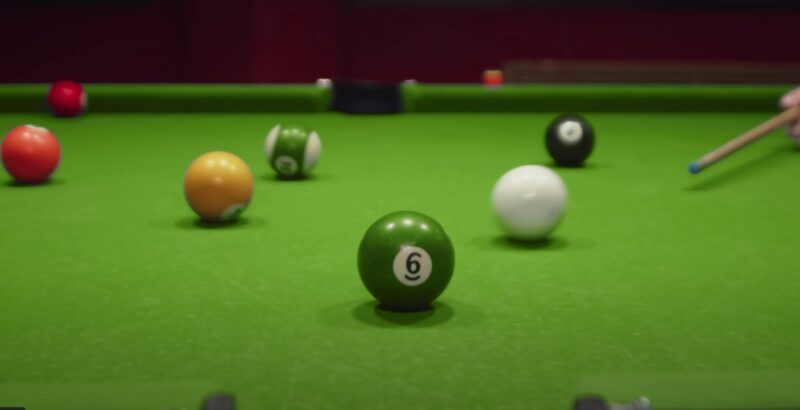
The main objective in 8 Ball Pool is to claim a group of balls (either stripes or solids) and legally pocket all of them, then legally pocket the 8 ball, while preventing your opponent from doing the same.
The choice of group is determined during the game, typically after the break shot. The first player to pocket a ball after the break will continue to target that category of balls.
Game Play and Rules
Once the groups are determined, players take turns to hit their designated balls into the pockets. A player continues to shoot as long as they legally pocket one of their balls and does not commit a foul.
Fouls can include failing to hit any balls, pocketing the cue ball, or hitting the opponent’s balls before your own. If a foul is committed, the opposing player gets the chance to place the cue ball anywhere on the table for their shot, known as “ball in hand.”
While playing, it’s crucial to plan your shots, considering both the immediate impact and setting up for the next shot. Successful players think several moves ahead, positioning the cue ball in advantageous locations. The turn continues until the player fails to pocket one of their balls or commits a foul.
Winning the Game
To win the game, a player must pocket all of their group of balls, followed by the 8 ball. The player must clearly indicate the pocket in which they intend to sink the 8 ball. This is often done by verbally calling the pocket or signaling with the cue.
It’s important to note that if you pocket the 8 ball before clearing your group of balls or pocket it in an unintended pocket, you automatically lose the game. Similarly, if you sink the 8 ball and the cue ball on the same shot, it also results in a loss.
Common Fouls and Penalties
Understanding fouls is crucial in 8 Ball Pool as they can significantly impact the game. Common fouls include scratching (cue ball going into a pocket), not hitting your own group of balls first, not hitting any balls on the table, and pocketing the cue ball or an opponent’s ball illegally.
When a foul is committed, the opposing player gets “ball in hand”, allowing them to place the cue ball anywhere on the table for their next shot. Repeated fouls can lead to further penalties and give a significant advantage to the opponent.
Strategies and Tips
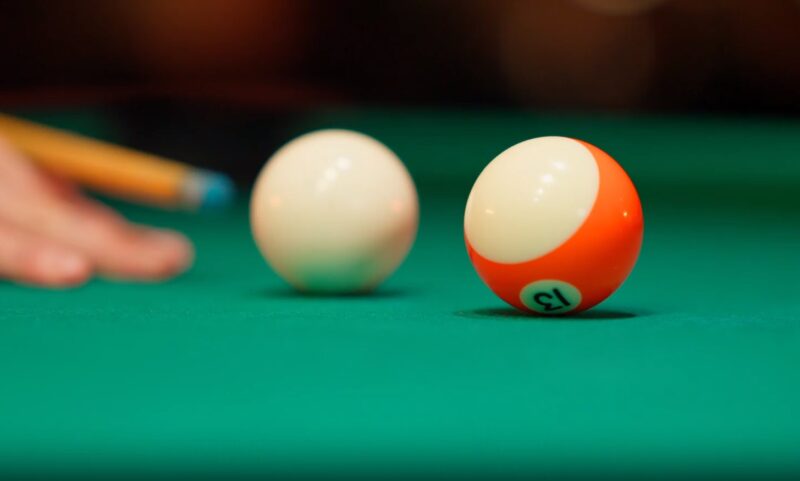
Playing 8 Ball Pool involves not just physical skill but also strategy. Here are some tips to improve your game:
- Plan Ahead: Always think a few shots ahead, planning where the cue ball will end up after your shot to set up for the next move.
- Control the Cue Ball: Learn various cue ball control techniques like stop shots, follow shots, and draw shots to position the cue ball favorably after each shot.
- Practice Your Break: A powerful and strategic break can set the tone for the game. Practice different break techniques to find what works best for you.
- Defensive Play: Sometimes the best offense is a good defense. If you don’t have a clear shot, consider playing a defensive shot to make it harder for your opponent.
- Know Your Angles: Understanding angles and how the ball will bounce off the cushions can significantly improve shot accuracy and positioning.
FAQs
Can I hit the opponent’s ball first to pocket my own ball?
No, in a standard game of 8 Ball Pool, you must always hit one of your own group of balls first before any other ball, including the 8 ball, unless you’re on the black ball after clearing your group. Hitting the opponent’s ball first would be considered a foul.
What happens if both a stripe and a solid ball are pocketed on the break?
If both a stripe and a solid ball are pocketed on the break, the table is still considered “open.” The breaker may choose either group for their next shot, and the game proceeds with the player needing to legally pocket a ball from the chosen group to confirm their set.
Is it necessary to call ‘pocket’ for every shot or just the 8 ball?
In most casual and amateur play, it’s only necessary to call the pocket for the 8 ball. However, in more formal or tournament settings, players might be required to call both the ball and the pocket for every shot. It’s important to clarify the rules with your opponent before the game begins.
What is a ‘safety shot’ in 8 Ball Pool?
A safety shot is a defensive strategic shot where the player aims to hit their own ball legally but positions the cue ball and/or the object balls in such a way that it makes it difficult for the opponent to make a successful shot next. It’s often used when a direct offensive shot is not possible or could lead to a disadvantage.
How do you decide who breaks first in an 8 Ball Pool game?
Who breaks first can be decided by a coin toss, mutual agreement, or by playing a short game like “lagging,” where each player hits a ball from one end of the table to the other, with the goal of getting closest to the starting end without touching it. The player who gets closer without fouling decides who breaks.
Can I use the opponent’s ball to pocket my last object ball before the 8 ball?
You can use the opponent’s ball to carom or combo into your own ball to pocket it; however, your ball must be the first ball you hit with the cue ball. This type of shot must be executed with precision and is legal as long as you don’t commit any fouls like pocketing the opponent’s ball or failing to hit your own group first.
Can I hit the opponent’s ball first to pocket my own ball?
No, in a standard game of 8 Ball Pool, you must always hit one of your own group of balls first before any other ball, including the 8 ball, unless you’re on the black ball after clearing your group. Hitting the opponent’s ball first would be considered a foul.
What happens if both a stripe and a solid ball are pocketed on the break?
If both a stripe and a solid ball are pocketed on the break, the table is still considered “open.” The breaker may choose either group for their next shot, and the game proceeds with the player needing to legally pocket a ball from the chosen group to confirm their set.
Is it necessary to call ‘pocket’ for every shot or just the 8 ball?
In most casual and amateur play, it’s only necessary to call the pocket for the 8 ball. However, in more formal or tournament settings, players might be required to call both the ball and the pocket for every shot. It’s important to clarify the rules with your opponent before the game begins.
What is a ‘safety shot’ in 8 Ball Pool?
A safety shot is a defensive strategic shot where the player aims to hit their own ball legally but positions the cue ball and/or the object balls in such a way that it makes it difficult for the opponent to make a successful shot next. It’s often used when a direct offensive shot is not possible or could lead to a disadvantage.
How do you decide who breaks first in an 8 Ball Pool game?
Who breaks first can be decided by a coin toss, mutual agreement, or by playing a short game like “lagging,” where each player hits a ball from one end of the table to the other, with the goal of getting closest to the starting end without touching it. The player who gets closer without fouling decides who breaks.
Can I use the opponent’s ball to pocket my last object ball before the 8 ball?
You can use the opponent’s ball to carom or combo into your own ball to pocket it; however, your ball must be the first ball you hit with the cue ball. This type of shot must be executed with precision and is legal as long as you don’t commit any fouls like pocketing the opponent’s ball or failing to hit your own group first.
Final Words
8 Ball Pool is a blend of physical skill, strategy, and mental acuity. By understanding the rules, mastering the equipment, and practicing strategies, players can significantly improve their game and enjoy this challenging and rewarding sport.
Remember, practice is key to mastering any game, so spend time at the table, learn from each shot, and don’t be afraid to take on more experienced opponents. With dedication and understanding, anyone can become proficient at 8 Ball Pool, enjoying hours of fun and competition.
